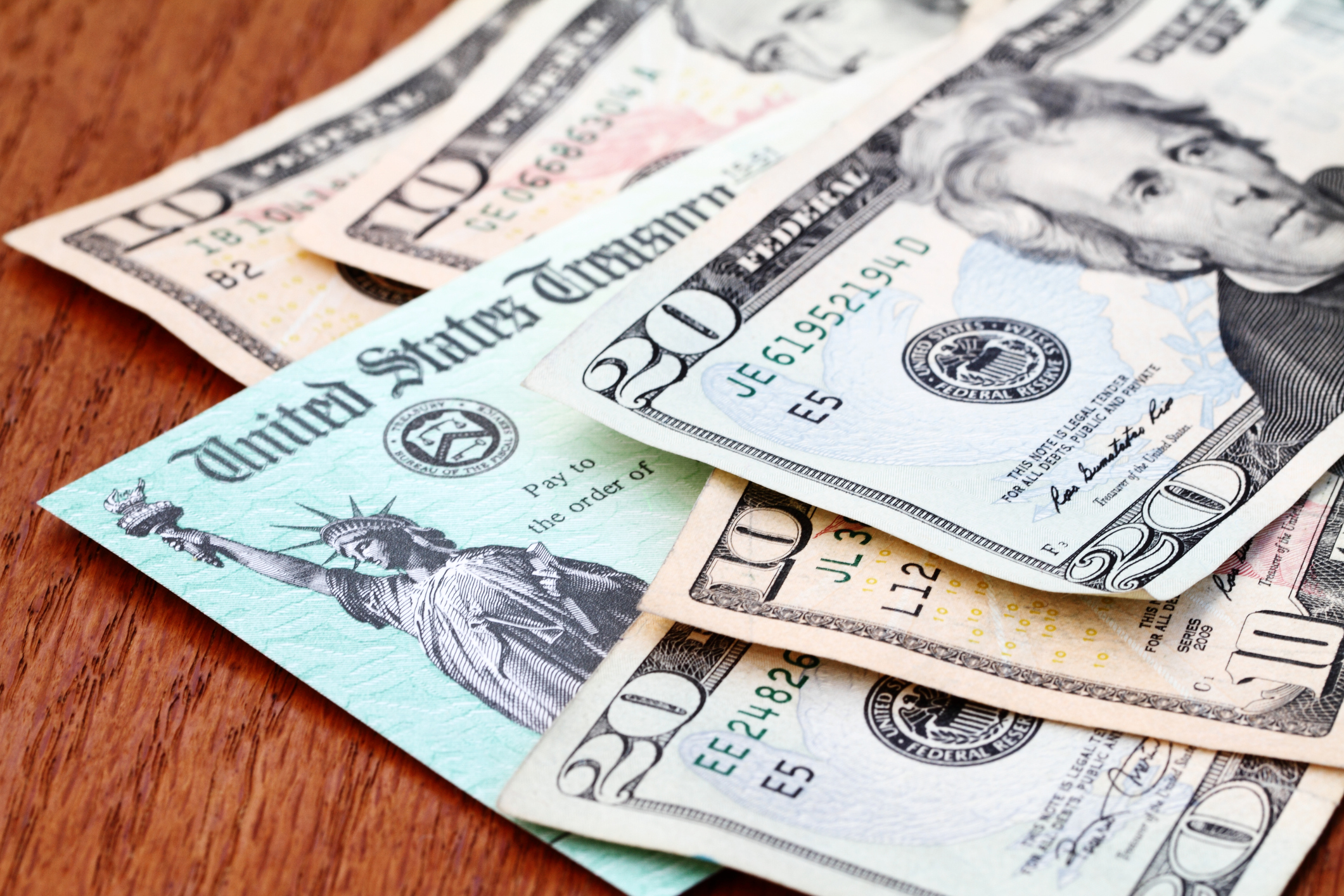Tax-Smart Ways to Tap Your Nest Egg
Knowing which accounts to raid first can stretch your savings.

The first wave of baby-boomers turns 65 this year, and that means millions of new retirees will begin to switch from accumulating a nest egg to tapping it. If you're a boomer, it's time to start thinking about how you'll convert decades of savings into a lifetime stream of income and to consider which accounts to tap first. Different sources of income have different tax consequences. Withdrawing funds in the most tax-efficient way will not only minimize your tax bill but could also make your savings last longer.
Generally, if you benefited from a tax deduction for contributing to an IRA or 401(k), every dollar you withdraw later will be taxed at your ordinary income-tax rate -- currently as high as 35%. Each year, you'll receive a Form 1099-R from your account custodian that documents the taxable distributions to report on your tax return.
If you took a pass on the upfront deduction by contributing or converting funds to a Roth IRA, you'll enjoy some tax-free income in retirement. Your annual Form 1099-R will note that you received a distribution from a Roth account, but it won't specify whether any of the money is taxable (you'll have to calculate that yourself on Form 8606, available at www.irs.gov). You may withdraw Roth IRA funds, up to the cumulative amount of your contributions, at any time tax-free and penalty-free. But you must wait until you are at least 59 1/2 years old and the account has been open at least five years before you can access the earnings tax-free (unless you use the money to buy a first home).

Sign up for Kiplinger’s Free E-Newsletters
Profit and prosper with the best of expert advice on investing, taxes, retirement, personal finance and more - straight to your e-mail.
Profit and prosper with the best of expert advice - straight to your e-mail.
If you made nondeductible contributions to a traditional IRA, distributions are a little trickier.
Spread your money around. Just as you should diversify your assets among various types of investments to minimize your risk, it's a good idea to vary your tax liability, too, says Greg Salsbury, author of Retirementology: Rethinking the American Dream in a New Economy. "The old assumption that you would be in a lower tax bracket in retirement is more questionable now," says Salsbury, an expert on retirement-income planning. "Given all the ambiguity of how we may be taxed in the future and in what amounts, it makes sense not to put too many of your eggs in a single basket."
If you have been feeding your 401(k) or other tax-deferred retirement account -- say, a 403(b) or 457 plan or a federal Thrift Savings Plan -- to the exclusion of all other savings, consider stashing some money in taxable savings or investment accounts. You may also want to contribute to or convert some retirement funds to a Roth account so that you will have more control over how much you pay in taxes in retirement.
First out: Taxable accounts. Conventional wisdom suggests that you should withdraw money from your taxable accounts, which usually benefit from lower capital-gains rates, before touching your retirement funds. Tapping taxable accounts first not only minimizes your tax bill but also allows your traditional IRAs and other tax-deferred accounts to continue to compound unfettered by taxes for as long as possible. The result: a bigger nest egg.
Of course, every rule has its exception. Sometimes it pays to tap into your tax-deferred retirement accounts once you can -- but before you are required to -- so that your IRA doesn't grow too big, which would result in large required minimum distributions each year after you turn 70 1/2, along with hefty tax bills. "We call it the 70 1/2 tax trap," says Phil Lubinski, president of the Strategic Distribution Institute, in Denver, which helps financial advisers develop retirement-income plans for their clients. "Many people believe tax rates will rise in the future, which builds a case for liquidating IRAs while the brackets are low," he adds.
If you have a brokerage account and sell assets that you've owned for more than a year, you'll pay just 15% on your profits and, in some cases, no tax at all -- at least for the next two years. Or, if you sell an asset in a taxable account at a loss, you can use it to offset investment gains, potentially wiping out any tax liability on your profits. Excess losses may be used to offset up to $3,000 of ordinary income per year and may be carried forward to offset income in future years. (You generally can't claim tax-deductible losses in a retirement account.) Qualified dividends are also taxed at a maximum 15% rate (and 0% for those who are eligible). Although interest on your savings is taxed at your ordinary income-tax rate, the principal -- the money you originally invested -- is tax-free.
Many current retirees are in a unique position this year and next to cash in on tax-free capital gains. Say Mary and Fred, both 65, receive $48,000 a year in pension income and $36,000 in combined Social Security benefits, for a gross income of $84,000. Only 85% of their Social Security benefits are taxed, so their adjusted gross income is $78,600. After they subtract $11,400 for the standard deduction, $7,300 for personal exemptions and $2,200 for the over-65 deduction, their taxable income is $57,700.
Because the top of the 15% income-tax bracket is $69,000, the couple may increase their income and still save on taxes. For example, they could cash in up to $11,300 in investment profits tax-free and still qualify for the 0% capital-gains rate in 2011 and 2012. Or they could withdraw up to $11,300 from their retirement accounts and pay a 15% income-tax rate. Or, they could use a combination of the two strategies.
Next: Retirement accounts. After exhausting your taxable accounts, focus on your traditional retirement accounts, such as IRAs, 401(k)s and other employer-based retirement plans. You'll pay taxes on your entire withdrawal at your ordinary income-tax rate (except for any after-tax contributions you made, which would be tax-free). If you need $20,000 per year in after-tax money, for example, and you're in the 25% tax bracket, you'll have to withdraw nearly $27,000 from your IRA.
You can start taking withdrawals from your traditional IRA penalty-free once you turn 59 1/2, but you'll owe federal -- and possibly state -- income taxes on the distributions. You probably can't tap your 401(k) or similar employer-based retirement account while you're still working, unless your plan has an in-service distribution provision that allows you to take withdrawals once you reach the 59 1/2 milestone. But if you leave your job when you are 55 or older, you can take penalty-free withdrawals (but still owe taxes). If you roll over your retirement funds to an IRA before age 59 1/2, you'll lose this early-out option.
Once you turn 70 1/2, it's time to reimburse Uncle Sam for all those years of tax-free growth. You must start tapping IRAs and other traditional retirement accounts by April 1 of the following year and take withdrawals by December 31 each year after that. (If you delay your first distribution until April 1, you'll have to take a second distribution by the end of that same year -- which could result in a sizable tax bill.)
Your required minimum distributions, known as RMDs, are based on your account balance at the end of the previous year divided by your life expectancy, as determined by IRS mortality tables. If you don't take a distribution of at least the required amount, you'll be hit with a stiff penalty: 50% of the amount you failed to withdraw. In most cases, you should save your tax-free Roth IRA distributions for last. Unlike traditional IRAs, Roth IRAs have no annual distribution requirement. And if you have funds left over when you die, your heirs will thank you: Distributions from inherited Roth IRAs are tax-free; those from traditional IRAs are taxed at heirs' ordinary income-tax rate.
But don't be afraid to tap your Roth IRAs earlier as a way to increase your retirement income without being pushed into a higher tax bracket. The bottom line: Decide whose taxes you want to minimize -- yours or your heirs'.
Get Kiplinger Today newsletter — free
Profit and prosper with the best of Kiplinger's advice on investing, taxes, retirement, personal finance and much more. Delivered daily. Enter your email in the box and click Sign Me Up.

-
 Get Netflix, Hulu and Apple TV Plus for Free by Joining T-Mobile
Get Netflix, Hulu and Apple TV Plus for Free by Joining T-MobileT-Mobile customers save up to $35/month on streaming services thanks to this Netflix, Hulu and Apple TV Plus bundle. Here’s how to get it.
By Rachael Green
-
 Missed Tax Day? Nearly One Million Taxpayers Still Can File and Claim Valuable Tax Refunds
Missed Tax Day? Nearly One Million Taxpayers Still Can File and Claim Valuable Tax RefundsTax Refunds Some folks don’t file taxes simply because they don’t earn enough, but they could be missing out on a significant tax refund.
By Gabriella Cruz-Martínez
-
 457 Plan Contribution Limits for 2025
457 Plan Contribution Limits for 2025Retirement plans There are higher 457 plan contribution limits for state and local government workers in 2025. That's good news for state and local government employees.
By Kathryn Pomroy
-
 Medicare Basics: 11 Things You Need to Know
Medicare Basics: 11 Things You Need to KnowMedicare There's Medicare Part A, Part B, Part D, Medigap plans, Medicare Advantage plans and so on. We sort out the confusion about signing up for Medicare — and much more.
By Catherine Siskos
-
 The Seven Worst Assets to Leave Your Kids or Grandkids
The Seven Worst Assets to Leave Your Kids or Grandkidsinheritance Leaving these assets to your loved ones may be more trouble than it’s worth. Here's how to avoid adding to their grief after you're gone.
By David Rodeck
-
 SEP IRA Contribution Limits for 2025
SEP IRA Contribution Limits for 2025SEP IRA A good option for small business owners, SEP IRAs allow individual annual contributions of as much as $70,000 in 2025, up from $69,000 in 2024.
By Jackie Stewart
-
 Roth IRA Contribution Limits for 2025
Roth IRA Contribution Limits for 2025Roth IRAs Roth IRA contribution limits have gone up. Here's what you need to know.
By Jackie Stewart
-
 SIMPLE IRA Contribution Limits for 2025
SIMPLE IRA Contribution Limits for 2025simple IRA The SIMPLE IRA contribution limit increased by $500 for 2025. Workers at small businesses can contribute up to $16,500 or $20,000 if 50 or over and $21,750 if 60-63.
By Jackie Stewart
-
 457 Contribution Limits for 2024
457 Contribution Limits for 2024retirement plans State and local government workers can contribute more to their 457 plans in 2024 than in 2023.
By Jackie Stewart
-
 Roth 401(k) Contribution Limits for 2025
Roth 401(k) Contribution Limits for 2025retirement plans The Roth 401(k) contribution limit for 2025 increased, and workers who are 50 and older can save even more.
By Jackie Stewart